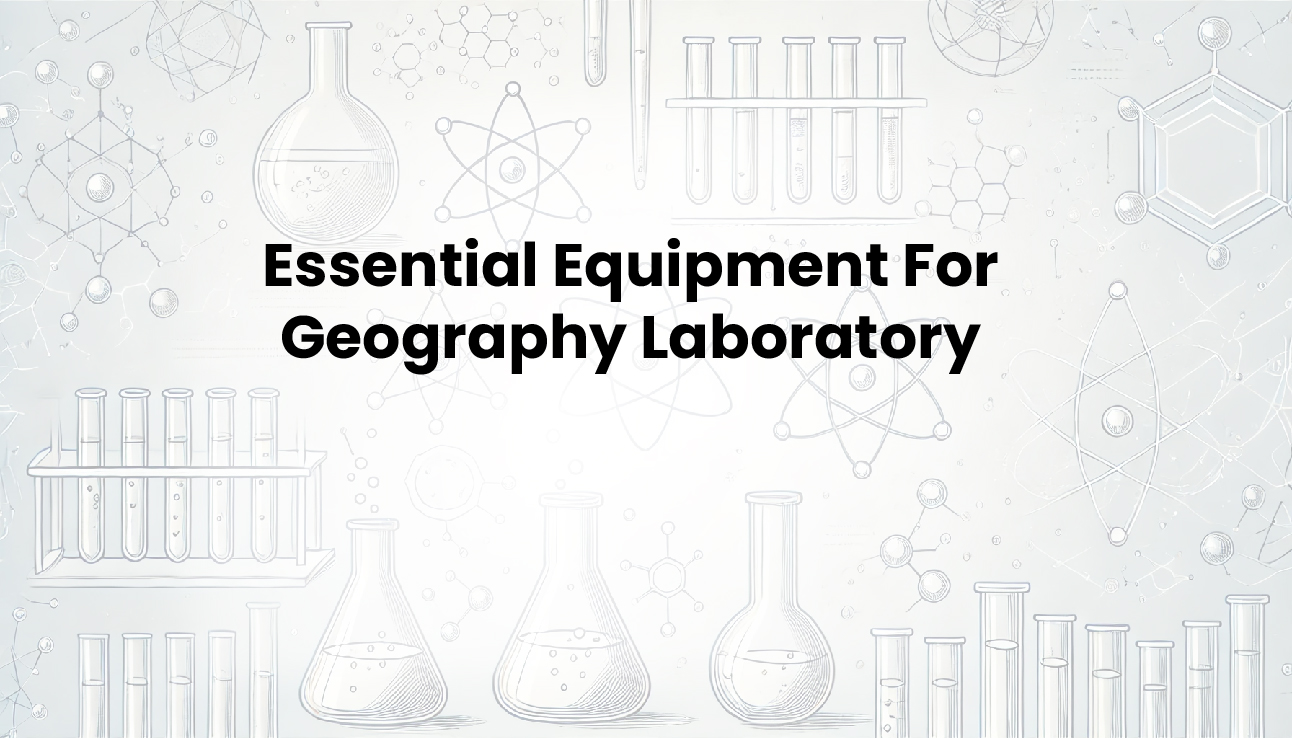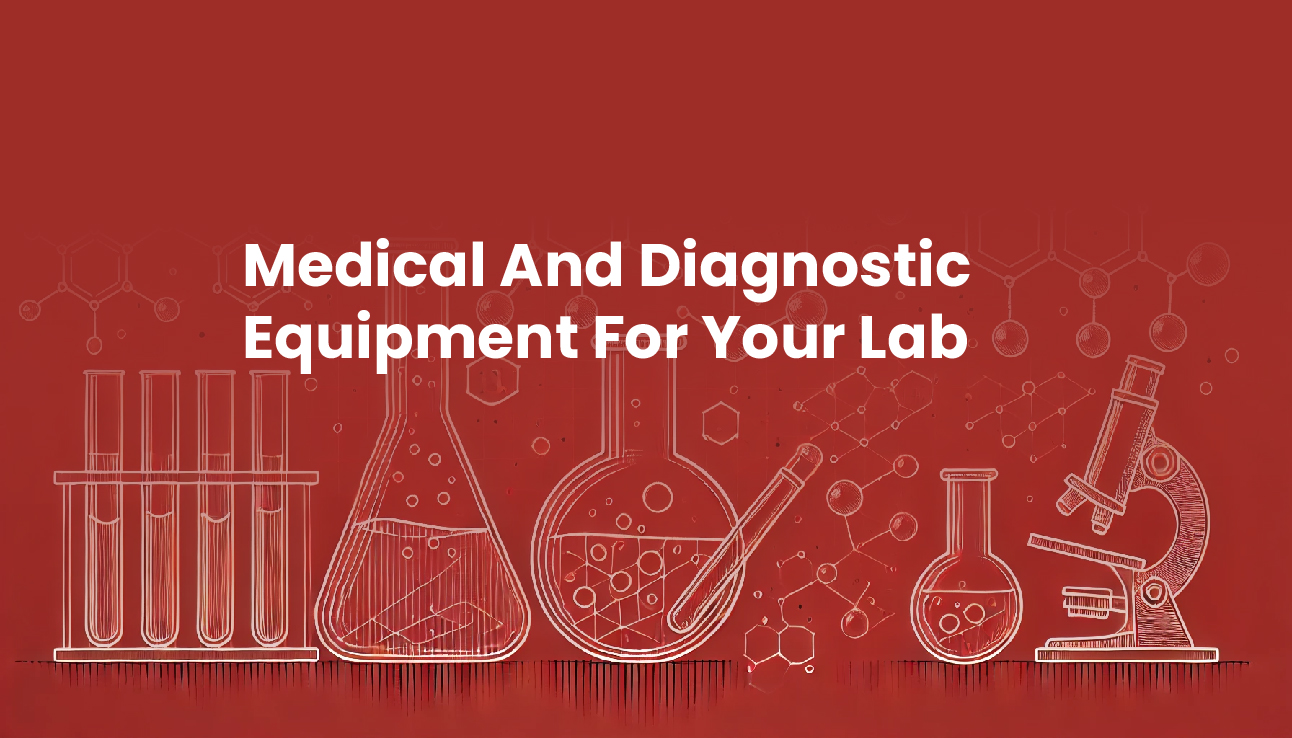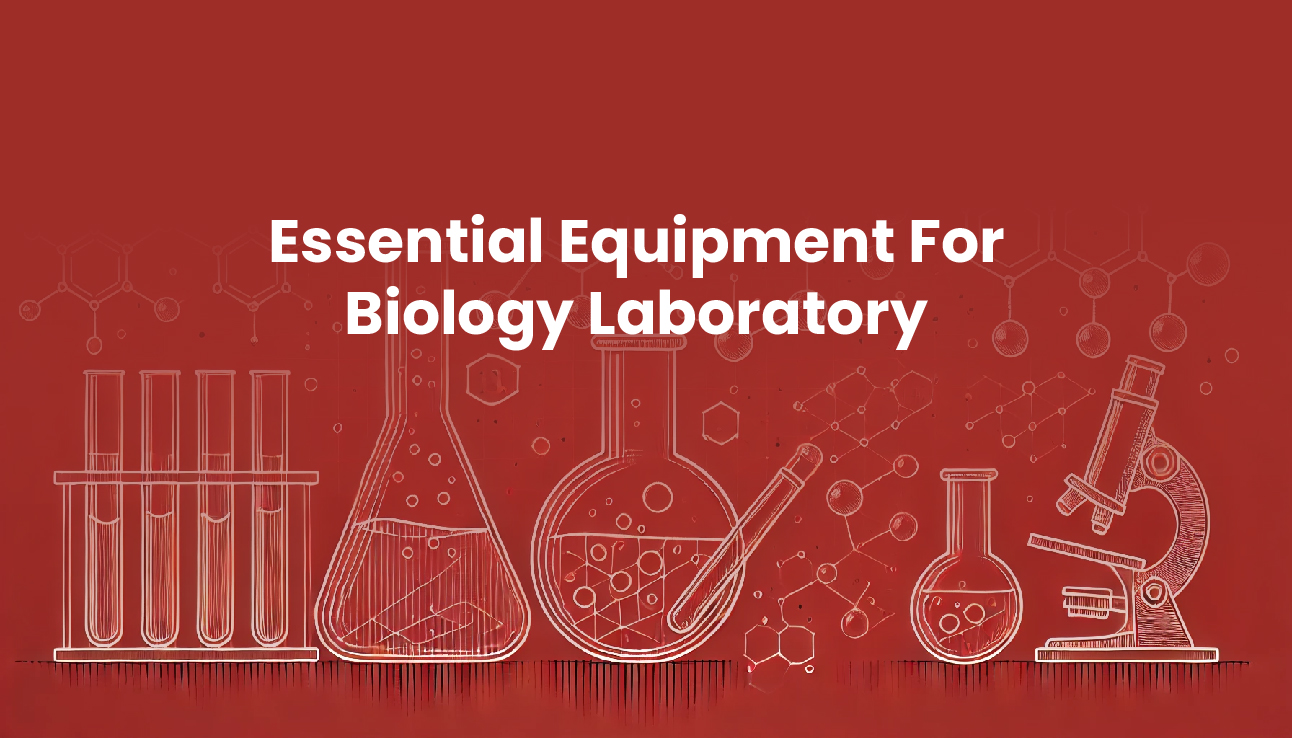Engineering laboratories are essential spaces for students and professionals to conduct experiments, analyze data, and develop new technologies. These laboratories are equipped with a variety of specialized equipment that is used for different purposes.
If you are planning on equipping your newly built engineering laboratory or hoping to re-equip your already existing laboratory but lack knowledge on equipment to get, then you should stay to the end of this article.
In this article, we will discuss some of the engineering laboratory equipment, their uses, and some safety precautions to observe while using engineering laboratory equipment.
Common Engineering Laboratory Equipment
Common equipment is another description used for basic equipment. In this section, we will be looking at the basic equipment your engineering laboratory needs to ensure efficiency in the laboratory.
Here is some basic equipment for the engineering laboratory:
-
Microscope:
Microscopes are used in engineering laboratories to magnify small objects or structures that are not visible to the naked eye. They are essential for analyzing materials, examining microorganisms, and studying the structure of various components.
In an engineering laboratory, several types of microscopes are used, depending on the specific application and field of study. Here are some common types of microscopes used in engineering:
- Optical Microscope (Light Microscope): For observing microstructures, surface features, and materials at magnifications up to 1000x.
- Scanning Electron Microscope (SEM): For high-resolution imaging of surfaces, microstructures, and morphology at magnifications up to 100,000x.
- Transmission Electron Microscope (TEM): For studying the internal structure of materials, crystallography, and nanoscale features at magnifications up to 1,000,000x.
- Stereo Microscope (Dissecting Microscope): For observing and manipulating small components, circuits, and microelectromechanical systems (MEMS) at magnifications up to 100x.
- Confocal Microscope: For high-resolution, 3D imaging of surfaces and microstructures using laser illumination.
- Atomic Force Microscope (AFM): For studying surface topography, nanoscale features, and material properties at atomic resolution.
- Digital Microscope: For capturing and analyzing digital images of microstructures, surfaces, and materials using a camera and software.
2. Spectrophotometer:
Spectrophotometers are used to measure the intensity of light at different wavelengths. They are commonly used in engineering laboratories for analyzing the properties of materials, determining the concentration of a substance in a solution, and studying the absorption and emission of light.
In an engineering laboratory, several types of spectrophotometers are used, depending on the specific application and field of study. Here are some common types of spectrophotometers used in engineering:
- UV-Vis Spectrophotometer: Measures absorbance and transmittance in the ultraviolet and visible light range (200-800 nm), used for analyzing materials, chemicals, and biological samples.
- Infrared (IR) Spectrophotometer: Measures absorbance and transmittance in the infrared range (4000-400 cm-1), used for identifying materials, analyzing chemical bonds, and detecting contaminants.
- Fourier Transform Infrared (FTIR) Spectrophotometer: A type of IR spectrophotometer that uses Fourier transform techniques for high-resolution analysis of materials and chemicals.
- Nuclear Magnetic Resonance (NMR) Spectrophotometer: Measures the magnetic properties of atomic nuclei, used for analyzing molecular structure, chemical composition, and material properties.
- X-ray Fluorescence (XRF) Spectrophotometer: Measures the elemental composition of materials by detecting X-ray fluorescence, used for analyzing metals, alloys, and other materials.
- Raman Spectrophotometer: Measures the vibrational modes of molecules, used for analyzing material properties, detecting defects, and identifying chemicals.
- Photoluminescence Spectrophotometer: Measures the light emitted by materials, used for analyzing semiconductor materials, optical properties, and detecting defects.
3. Centrifuges:
Centrifuges are used to separate components of a mixture based on their density. They are commonly used in engineering laboratories for separating solids from liquids, isolating specific components from a sample, and conducting experiments in biochemistry and molecular biology.
In an engineering laboratory, several types of centrifuges are used, depending on the specific application and field of study. Here are some common types of centrifuges used in engineering:
- Benchtop Centrifuge: A compact, low-speed centrifuge for separating small samples, used in materials science, biology, and chemistry labs.
- High-Speed Centrifuge: A powerful centrifuge for separating particles, used in materials processing, nanotechnology, and biomedical engineering.
- Ultracentrifuge: A high-speed centrifuge for separating small particles, used in materials science, nanotechnology, and biomedical engineering.
- Microcentrifuge: A small, high-speed centrifuge for separating small samples, used in biology, chemistry, and materials science labs.
- Refrigerated Centrifuge: A centrifuge with temperature control, used for separating temperature-sensitive samples in biomedical engineering, biology, and chemistry labs.
- Vacuum Centrifuge: A centrifuge that operates under vacuum conditions, used for drying and separating materials in materials science and nanotechnology labs.
- Industrial Centrifuge: A large-scale centrifuge for separating particles and materials in industrial processes, such as wastewater treatment and materials processing.
These centrifuges are used in various engineering fields, including:
- Materials science and engineering
- Biomedical engineering
- Chemical engineering
- Mechanical engineering
- Nanotechnology
- Environmental engineering
4. Balance:
Laboratory balance is known for its use in measurement taking to ensure an accurate end result. In an engineering laboratory, a balance is used for weight measurement, material characterization, chemical analysis, calibration, and research and development.
Types of balances used in engineering laboratories:
- Analytical balance: High-precision balance for measuring small weights (up to 0.1 mg).
- Precision balance: Accurate balance for measuring weights (up to 0.01 g).
- Top-loading balance: Convenient balance for measuring larger weights (up to several kg).
- Electronic balance: Digital balance with automatic calculations and data output.
- Hydraulic balance: Balance using hydraulic forces for heavy loads (up to several tons).
Specialized Engineering Laboratory Equipment
1. 3D printer:
3D printers are used to create three-dimensional objects from digital models. They are essential for prototyping new designs, manufacturing custom parts, and conducting research in additive manufacturing and rapid prototyping.
In an engineering laboratory, several types of 3D printers are used, including:
- Fused Deposition Modeling (FDM) printers: Most common type, uses melted plastic to create objects.
- Stereolithography (SLA) printers: Uses resin and laser to create highly detailed objects.
- Selective Laser Sintering (SLS) printers: Uses powdered material and lasers to create strong, durable objects.
- Binder Jetting printers: Uses powdered material and liquid binder to create objects.
- Directed Energy Deposition (DED) printers: Use a focused beam of energy (e.g., laser, electron beam) to melt and deposit metal onto a substrate.
- Laminated Object Manufacturing (LOM) printers: Uses layers of paper or sheet material bonded together to create objects.
- Powder Bed Fusion (PBF) printers: Uses powdered material and laser or electron beam to create metal objects.
- Material Jetting printers: Uses droplets of material to create objects, similar to inkjet printing.
- Digital Light Processing (DLP) printers: Uses a projector to cure resin layer by layer.
- Hybrid printers: Combines multiple printing technologies in one machine.
2. Environmental chamber:
Environmental chambers are used to simulate different environmental conditions such as temperature, humidity, and pressure. They are essential for testing the performance of materials and components under extreme conditions, conducting accelerated aging tests, and studying the effects of environmental factors on various systems.
In an engineering laboratory, various types of environmental chambers are used to simulate and test the effects of different environmental conditions on materials, components, and systems. Some common types of environmental chambers include:
- Temperature and Humidity Chamber: Controls temperature and humidity to test material properties and behavior.
- Climatic Chamber: Simulates various climatic conditions, such as temperature, humidity, and sunlight.
- Thermal Shock Chamber: Subjects materials to extreme temperature changes to test durability.
- Vibration Chamber: Simulates vibrations to test material and component durability.
- Altitude Chamber: Simulates high-altitude conditions to test material and component behavior.
- Corrosion Chamber: Exposes materials to corrosive environments to test durability.
- Salt Spray Chamber: Simulates saltwater exposure to test corrosion resistance.
- Weathering Chamber: Exposes materials to simulated sunlight, rain, and temperature fluctuations.
- Acoustic Chamber: Tests material and component response to sound and vibration.
- Vacuum Chamber: Simulates vacuum conditions to test material and component behavior.
- Walk-in Chamber: Large chamber for testing entire systems or vehicles.
- Drive-in Chamber: Allows for testing of large vehicles or equipment.
3. Data acquisition system:
Data acquisition systems are used to collect, analyze, and store data from sensors and instruments. They are essential for monitoring and controlling experiments, recording measurements in real-time, and analyzing the performance of systems and components.
In an engineering laboratory, various types of data acquisition systems are used to collect, measure, and analyze data from experiments, tests, and simulations. Some common types of data acquisition systems include:
- Analog-to-Digital (A/D) Converters: Convert analog signals to digital data.
- Digital Multimeters (DMMs): Measure electrical parameters like voltage, current, and resistance.
- Oscilloscopes: Measure and display electrical signals over time.
- Data Loggers: Record data from sensors and instruments over time.
- Signal Conditioning Systems: Amplify, filter, and process signals from sensors.
- DAQ Cards (Data Acquisition Cards): Interface with sensors and instruments to collect data.
- Modular DAQ Systems: Scalable systems with multiple modules for different measurements.
- Distributed DAQ Systems: Collect data from remote locations or multiple sources.
- High-Speed DAQ Systems: Collect data at high sampling rates (e.g., for dynamic events).
- Wireless DAQ Systems: Collect data wirelessly from sensors and instruments.
- PC-Based DAQ Systems: Use a computer as the central hub for data acquisition.
- Stand-Alone DAQ Systems: Independent systems that don’t require a computer.
4. Oscilloscopes:
Oscilloscopes are electronic devices used to measure and display voltage signals over time. They are essential for analyzing and troubleshooting electronic circuits, testing the performance of electrical components, and studying the behavior of signals in various systems.
In an engineering laboratory, various types of oscilloscopes are used to measure and analyze electrical signals. Some common types of oscilloscopes include:
- Analog Oscilloscope: Displays analog signals in real-time.
- Digital Oscilloscope: Samples and displays digital signals.
- Digital Storage Oscilloscope (DSO): Stores digital signals for later analysis.
- Mixed Signal Oscilloscope (MSO): Measures both analog and digital signals.
- Digital Phosphor Oscilloscope (DPO): Uses digital technology to mimic analog phosphor displays.
- Waveform Generator: Generates test signals for circuit testing.
- Handheld Oscilloscope: Portable, compact oscilloscope for field use.
- PC-Based Oscilloscope: Uses a computer as the display and control interface.
- High-Speed Oscilloscope: Measures high-frequency signals (e.g., GHz range).
- Sampling Oscilloscope: Measures high-speed signals using sampling techniques.
- Real-Time Oscilloscope: Measures and displays signals in real time.
- Vector Signal Oscilloscope: Measures and displays vector signals (e.g., I/Q signals).
5. Thermal imaging camera:
Thermal imaging cameras are used to detect and visualize heat patterns in objects or systems. They are essential for identifying hot spots in electrical circuits, monitoring the temperature of mechanical components, and conducting thermal analysis of buildings and structures.
In an engineering laboratory, various types of thermal imaging cameras are used for temperature measurement, analysis, and visualization. Some common types of thermal imaging cameras include:
- Infrared (IR) Camera: Measures temperature using infrared radiation.
- Thermal Imaging Camera: Visualizes temperature differences as color images.
- High-Resolution Thermal Camera: Provides detailed thermal images with high accuracy.
- Low-Resolution Thermal Camera: Offers a more affordable option for basic thermal imaging needs.
- Handheld Thermal Camera: Portable, compact camera for field use.
- Fixed Mount Thermal Camera: Installed in a fixed location for continuous monitoring.
- High-Speed Thermal Camera: Captures rapid temperature changes in real time.
- High-Temperature Thermal Camera: Measures extremely high temperatures (e.g., above 1000°C).
- Low-Temperature Thermal Camera: Measures very low temperatures (e.g., below -50°C).
- Multispectral Thermal Camera: Measures temperature and other spectral data (e.g., visible, near-IR).
- Hyperspectral Thermal Camera: Measures detailed spectral data across a wide range.
- Thermal Line Scanner: Measures temperature along a single line or profile.
Safety Precautions When Using Engineering Laboratory Equipment
When using engineering laboratory equipment, it’s essential to follow safety precautions to prevent injuries, and damage, and ensure a safe working environment. Here are some general safety precautions:
1. Read manuals and instructions:
Understand the equipment’s operation, safety features, and potential hazards.
2. Wear personal protective equipment (PPE):
Use gloves, safety glasses, lab coats, and closed-toe shoes as required.
3. Ensure proper ventilation:
Use fume hoods, exhaust fans, or respirators when working with hazardous materials.
4. Follow electrical safety guidelines:
Avoid overloading outlets, use surge protectors, and keep equipment away from water.
5. Use equipment correctly:
Operate equipment within specified limits, and avoid misuse or tampering.
6. Monitor equipment conditions:
Regularly inspect and maintain equipment to prevent malfunctions.
7. Work in well-lit areas:
Ensure adequate lighting to prevent accidents and eye strain.
8. Avoid distractions:
Minimize interruptions, and focus on the task at hand.
9. Follow chemical handling procedures:
Handle chemicals with care, and follow proper storage, disposal, and spill response procedures.
10. Be prepared for emergencies:
Know the location of fire extinguishers, first aid kits, and emergency exits.
11. Supervise students and inexperienced users:
Ensure they understand equipment operation and safety procedures.
12. Dispose of waste properly:
Follow laboratory waste disposal guidelines to prevent environmental contamination.
13. Label and sign equipment:
Label equipment with warnings, instructions, and safety information.
14. Follow lockout/tagout procedures:
Ensure equipment is properly shut off and secured before maintenance or repair.
15. Participate in safety training:
Attend regular safety training sessions and workshops to stay updated on safety procedures.
Get Your Laboratory Equipment From SimmyFranks
SimmyFranks is a reputable and widely recognized dealer of all kinds of laboratory equipment and furniture. As an accredited laboratory equipment supplier, we offer a wide range of high-quality laboratory equipment purchased from reputable manufacturers. We sell our equipment at competitive prices, which of course do not affect the quality of the equipment. We pride ourselves on providing satisfying customer service and our knowledgeable staff are here to help you select equipment for your laboratory needs.
Contact us or visit our shop let us be your trusted partner in scientific research
Engineering Laboratory Equipment List and Uses: FAQ
1. What is the basic equipment needed in an engineering laboratory?
Some of the basic equipment needed in an engineering laboratory include oscilloscopes, multimeters, power supplies, signal generators, soldering irons, and breadboards. These tools are essential for conducting experiments, testing circuits, and troubleshooting electronic devices.
2. What is the purpose of an oscilloscope in an engineering laboratory?
An oscilloscope is a device used to measure and display voltage signals over time. It is commonly used in engineering laboratories to analyze the performance of electronic circuits, troubleshoot signal integrity issues, and measure the frequency and amplitude of electrical signals.
3. What is the function of a multimeter in an engineering laboratory?
A multimeter is a versatile tool used to measure voltage, current, and resistance in electronic circuits. It is essential for testing the functionality of components, diagnosing faults, and verifying the accuracy of electrical measurements.
4. Why is a power supply important in an engineering laboratory?
A power supply is used to provide a stable and adjustable voltage source for testing electronic circuits and devices. It is essential for powering up components, simulating different operating conditions, and verifying the performance of electrical systems.
5. What is the role of a signal generator in an engineering laboratory?
A signal generator is a device used to generate electronic signals of different frequencies, amplitudes, and waveforms. It is commonly used in engineering laboratories to test the response of circuits to various input signals, calibrate instruments, and simulate real-world conditions.
6. Why is a soldering iron necessary in an engineering laboratory?
A soldering iron is a tool used to join electronic components together by melting solder onto the connection points. It is essential for assembling circuits, repairing damaged components, and prototyping new designs in an engineering laboratory.
7. What is the purpose of a breadboard in an engineering laboratory?
A breadboard is a prototyping tool used to build and test electronic circuits without the need for soldering. It allows engineers to quickly prototype and iterate on designs, test different configurations, and troubleshoot circuit issues safely and reversibly.





